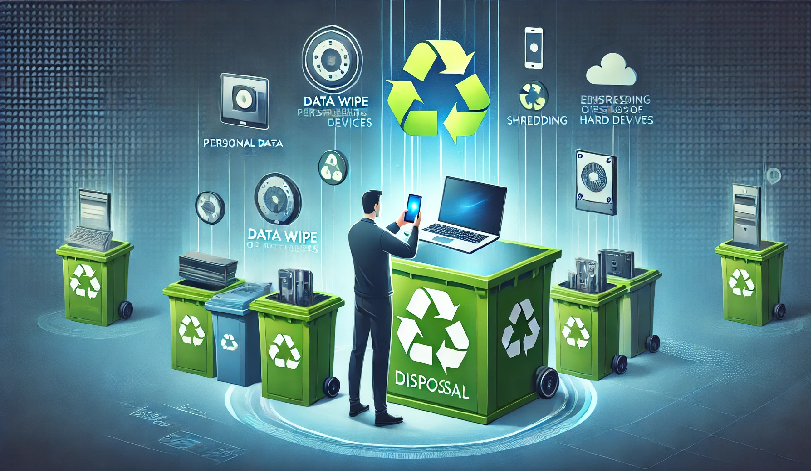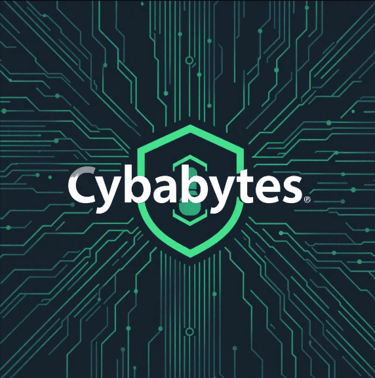How to Safely Dispose of Old Devices


Technology moves fast, and before you know it, that once-cutting-edge smartphone, laptop, or tablet is gathering dust in a drawer. But simply tossing old devices in the trash isn’t just wasteful—it’s risky. From data security threats to environmental concerns, responsible disposal is a must. Here’s how to safely dispose of your old gadgets while ensuring your personal information stays secure and the planet stays green.
Step 1: Wipe Your Data Before Recycling or Selling Devices
Before parting with your device, the most crucial step is securely erasing your personal data. You wouldn’t hand a stranger your diary, so don’t let them get their hands on your sensitive information either!
Backup Solutions Before Wiping Data
Before erasing your data, ensure you have a backup of anything important. Here are some reliable solutions:
Cloud Storage – Services like Google Drive, iCloud, Dropbox, or OneDrive allow seamless backup and access from anywhere.
External Hard Drives – A physical backup on an external HDD or SSD ensures long-term accessibility without internet dependency.
NAS (Network-Attached Storage) – Ideal for households or businesses, NAS solutions offer centralized, private backups with remote access.
Encrypted USB Drives – If security is a concern, encrypted USB flash drives are excellent for storing sensitive documents.
Time Machine (Mac) or Windows Backup – Built-in backup solutions for macOS and Windows provide full system snapshots for easy recovery.
How to Wipe Data from Different Devices:
Smartphones & Tablets
Backup Your Data – Use cloud services like Google Drive or iCloud to save important files, contacts, and photos.
Sign Out of All Accounts – Disable “Find My iPhone” or “Find My Device” and remove all linked accounts to prevent activation lock issues.
Factory Reset – For Android: Settings > System > Reset > Factory Data Reset. For iPhone: Settings > General > Transfer or Reset iPhone > Erase All Content and Settings.
Remove SIM & SD Cards – These may store personal data and should be either destroyed or repurposed.
Laptops & Computers
Backup Important Files – Use an external hard drive or cloud storage.
Sign Out & Deauthorize Accounts – Log out from cloud storage, browsers, and any apps that store personal data.
Wipe the Hard Drive – On Windows, use built-in tools like Reset This PC with the option to "Remove Everything." On Mac, boot into macOS Recovery and use Disk Utility to erase the drive securely.
Optional: Physically Destroy the Hard Drive – If you’re paranoid about data recovery, drilling holes through the drive or using a hammer ensures data is permanently unrecoverable.
Step 2: Decide How to Dispose of Your Device
Once your data is wiped, you have several options for safe disposal. The best choice depends on the device's condition and how environmentally conscious you want to be.
1. Sell or Trade-In
Many companies offer trade-in programs where you can exchange your old device for cash or store credit. Websites like Gazelle, Swappa, and even Apple, Samsung, and Best Buy have trade-in programs. If the device still has value, selling it is a great way to keep it out of landfills and into the hands of someone who can use it.
2. Donate to Those in Need
Nonprofits and schools often welcome donated devices. Organizations like Computers with Causes or The National Cristina Foundation refurbish and provide old laptops to students or low-income families. Just make sure the device is functional before donating.
3. Recycle Responsibly
Electronic waste (e-waste) is a huge environmental problem, with millions of tons ending up in landfills each year. Proper recycling helps recover valuable materials like gold, silver, and copper while keeping toxic elements out of the environment.
Find a Certified Recycler – Search for e-Stewards or R2-certified recyclers to ensure safe and ethical recycling practices.
Use Retailer Recycling Programs – Big retailers like Best Buy, Staples, and Apple offer free recycling for electronics.
Check Local E-Waste Collection Events – Many communities host events where you can drop off old gadgets safely.
4. Repurpose for DIY Projects
Feeling creative? Repurpose your old gadgets into something useful:
Turn an old smartphone into a security camera with apps like Alfred.
Convert a tablet into a dedicated e-reader or smart home controller.
Use an old laptop as a media server to store movies and music.
Step 3: Dispose of Accessories Properly
Don’t forget about old chargers, cables, and batteries! Lithium-ion batteries, in particular, can be hazardous if thrown in regular trash bins.
Recycle Batteries Separately – Use programs like Call2Recycle or take them to a designated drop-off location.
Bundle Cables & Chargers for Recycling – Some stores accept accessories for responsible recycling.
Final Thoughts: A Win-Win for You and the Planet
Disposing of old devices doesn’t have to be complicated, but doing it safely and responsibly is essential. Whether you’re selling, donating, recycling, or repurposing, taking the right steps helps protect your data while reducing environmental waste. By making smart disposal choices, you’re not just decluttering your space—you’re contributing to a more sustainable future. 🌍💚
So, next time you upgrade your gadget, remember: don’t just dump it—dispose of it the smart way!
